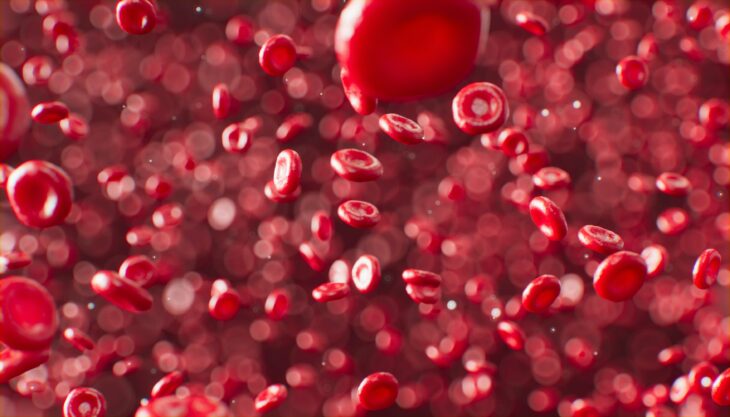Acute Myeloid Leukemia (AML) is cancer of the blood and bone marrow. Specifically, it is an abnormality in blood cells called myeloid cells. Many current treatments for AML are initially effective, but the cancer often returns. Even with today’s novel treatments, only 40-50% of patients survive 5 years after treatment.
AML returns because current treatments don’t kill off the source of these cancer cells. Think about when you pull a weed in your garden. If you only pull the above ground portion, the weed can grow back. But if you pull out the weed by its roots, it can’t grow back.
In the context of AML, cells called leukemia stem cells are the source of the cancer. These cells give rise to all other AML cells. Scientists want to find a treatment that targets leukemia at its source, making therapy more effective at removing all cancerous cells from patients with AML.
Each cell in the body has molecules called receptors. Receptors are like radio antennas, receiving signals from other cells around the body. The signals are generated when molecules called ligands bind to receptors. These signals tell cells what to do, like to proliferate, or even die. For cancer cells to function, they need to amplify pro-growth signals and turn off anti-growth signals.
Receptors called peroxisome proliferator-activated receptors (or PPARs) control many activities within cells. One of these receptors, called PPARα, determines whether leukemia cells live or die. Therefore, scientists tested whether targeting PPARα could eradicate all AML cells including leukemia stem cells.
Scientists have previously linked PPARα with survival of stem cells in chronic myeloid leukemia, and shown targeting PPARα with a drug called chiglitazar can be effective at treating this type of cancer. However, previous researchers don’t know how PPARα and chiglitazar work to treat AML.
To explore how this combo treats AML, a team of researchers from China obtained blood and bone marrow samples from AML patients and healthy volunteers. They isolated stem cells from these samples, yielding both leukemia stem cells and healthy blood stem cells. Then they treated the cells with chiglitazar and measured how many died.
They found that chiglitazar killed the leukemia stem cells but had no effect on the healthy blood stem cells. They explained this is unlike other cancer treatments, which can successfully kill cancer cells but also damage surrounding healthy cells.
To mimic the effects of treating humans with chiglitazar, the researchers injected mice with human AML cells. The mice were split into two groups: one group received chiglitazar daily for 14 days, and the other group received a placebo. Then the scientists collected bone marrow, spleen, and blood samples from three mice in each group to determine how many human AML cells were present.
The researchers counted the number of cells with characteristics specific to human AML cells in the samples using a method called flow cytometry. They found the mice treated with chiglitazar had less human AML cells present in their tissue samples. These mice also lived longer than the placebo group.
Next, the scientists wanted to know how chiglitazar killed AML cells. They found leukemia stem cells treated with chiglitazar had more PPARα present in the cells. They hypothesized that chiglitazar activated PPARα, kind of like turning on a light switch.
For these scientists, figuring out how chiglitazar and PPARα work to treat AML is like putting together the pieces of a puzzle. Another piece of this puzzle is a gene called HIF1α. AML cells normally have less PPARα and more HIF1α than healthy blood stem cells. In each of their experiments, the scientists found there was more PPARα and less HIF1α in the chiglitazar-treated group than in the control group.
They also found that decreased amounts of the HIF1α gene resulted in the death of both leukemia cells and leukemia stem cells. From these results, the scientists concluded chiglitazar treated AML by activating PPARα, which suppresses the production of HIF1α, resulting in the death of AML cells and leukemia stem cells.
The authors stated their findings provide an important stepping stone to improving AML treatment. However, their experiments still need to be tested in humans. In future, the authors suggested testing a combination of chiglitazar and chemotherapy to see if these treatments could create an even stronger means of pulling out the AML weed by its root.


